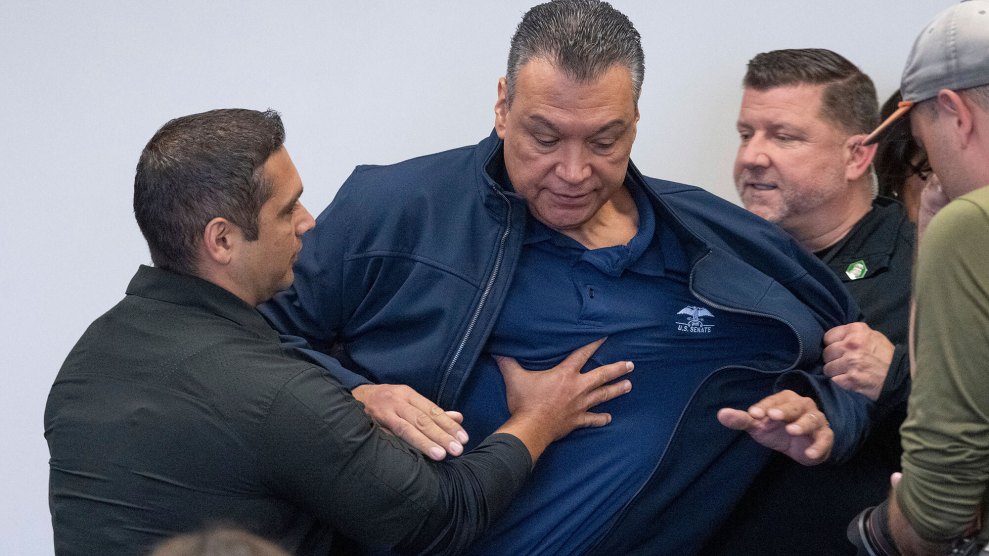For years, Americans have complained that Johnny can’t read. But in the booming postwar economy, it didn’t seem to matter. While other nations struggled along after World War II, America was on a winning streak. That buoyancy crept into the classroom, where Johnny’s education became less an exercise in self-discipline than a celebration of being born in the U.S.A. It didn’t matter what he learned, so long as Johnny could get a job and buy a house in the suburbs.
“Children have been taught that the good life is there for the taking,” says Dr. Ernest Boyer, president of The Carnegie Foundation for the Advancement of Teaching. “You could get by in school if you showed up. It would still be the ticket to success.”
The good life will be harder to achieve in the coming century. Today’s schools actually may be no worse than those of twenty–or fifty–years ago. Nonetheless, they aren’t good enough. American students need to be better educated if they are to compete in the global arena.
Every month brings a new round of media reports claiming that American students are slipping compared with those in other countries. Only in avoiding school do American students emerge as leaders, spending fewer days in school, doing less homework, and watching more TV than children in competing nations (see chart below).
America prides itself on being a nation of fast talkers whose verbal and reading skills are world-class. To some extent, this is true. In a 1991 survey, American nine-year-olds ranked second only to Finland in their ability to read and understand material (see below). But Americans dropped to eighth place by the age of fourteen. Earlier this year, an article in The Chronicle of Higher Education noted that only 75,243 students scored 600 or above on the verbal Scholastic Aptitude Test in 1992, compared with 116,630 in 1972.
American children lag still further behind in the areas of math and science. In last year’s International Assessment of Educational Progress, thirteen-year-old Americans ranked thirteenth in science and fourteenth in math–in a field of fifteen countries (see below). A controversial federal status report (prepared two years ago by Sandia National Laboratories in Albuquerque, New Mexico, but suppressed by the Department of Education until June of this year) counters such studies. Comparing international students by age group is misleading, the authors contend, because some students–and Americans generally fall into this category–haven’t covered the material on the test. But Nancy Mead, who directed the 1992 IAEP study, offers little comfort to parents who want to rationalize its findings. “Nobody pushes our kids,” she says. “To say that we are mediocre is kind.”
If foreign students can learn geometry at age thirteen, then why do Americans put it off until age fifteen? The answer is low expectations. “We act like being good at math is some sort of innate gift,” says Eugene Owen, who directs international activities at the National Center for Education Statistics. “Other countries assume that it takes effort.”
The dismal report card on U.S. schools has sparked a call for national standards. As a first step, Education Secretary Richard W. Riley unveiled “Goals 2000” last April. It promised, among other things, to make U.S. students “first in the world in math and science.” “We are looking at the world because it’s a global economy,” Riley told Mother Jones. “But we are mainly looking at ourselves.”
Unfortunately, Riley’s bill seems more fixated on schools than on the people they are supposed to serve. The “opportunity to learn” standards say almost nothing about testing students on what Americans decide they should know. Instead, a new agency and various provisions seem intended to give Washington more muscle in regulating teachers, textbooks, and curricula–quite a coup for a national government that funds only 6 percent of education costs.
To Diane Ravitch, who served as assistant secretary of education under Bush, the plan seems destined to squash local initiative without establishing, let alone raising, national standards. She says that America should decide what students should know, and then measure if they actually know it. “The goal is not to compete or tie kids down,” Ravitch says. “It’s to give everyone the tools to succeed.”
Countries such as Japan, Sweden, and France typically set national standards in testing, teaching qualifications, and class size. The United States stands almost alone worldwide in having no national curriculum or set of standards by which to measure student success. Is an A in rural Idaho as good as one earned in suburban Illinois? Americans have been quick to protest that their nation is too diverse and democratic to tolerate national goals. But that aversion is starting to change. “Ten years ago, any mention of national standards was political suicide,” says Boyer. “But people now realize that the system is pretty unbalanced.”
The country’s willingness to abandon minority students is at the root of America’s failing grade in education. While the top U.S. schools continue to set new standards for excellence, drawing students and faculty from around the world, lower-class schools often don’t even have enough textbooks for every student in a class.
In May, the United Nations ranked Americans sixth internationally in education, health, and overall development. When split into ethnic groups, white Americans jump to first place on the planet, while black Americans fall to thirty-first and Hispanic Americans to thirty-fifth. “We spend a lot less money on our poorest children,” says Iris C. Rotberg, a senior social scientist and education researcher at Rand. As an example, Rotberg points to Texas, where the one hundred wealthiest districts spend about $7,200 per student each year, while the one hundred poorest districts spend less than $3,000. In contrast, Swedish officials target two to three times as much public money to poor areas as to rich ones.
Nobody wants to admit that a large chunk of the American public is being left out of a system that prides itself on access. After all, nearly one quarter of adult Americans hold university degrees, compared with 13 percent of adults in Japan. But access means more than giving everyone a shot at the prize of a college degree. It also means demanding excellence from those who choose to finish school after twelve years.
“International tests tell us that we are more inconsistent than we ought to be,” says Diane Ravitch. “We divide classes into winners and losers. The winners are told to learn chemistry so they can go to college. The rest are given some watered-down version of general science. Just learn enough to work in McDonald’s, because that is where you are going to end up anyway.”
For U.S. students, high school and college are still the main path to success. Americans stay in school longer because they have nowhere else to go. In contrast, foreign countries have built solid apprenticeship programs and vocational schools. “Other countries can afford to have earlier exit points, because the alternatives are better developed,” says David Robitaille, a comparative mathematics expert at the University of British Columbia. “We dismiss technical schools as second-rate.”
Countries can also ease up on college when they do a better job teaching high school. Thomas Rohlen, a comparative education expert at Stanford University, estimates that half of the Japanese students who finish grade twelve have learned as much as the average U.S. college graduate. Other experts agree that the Japanese learn more in elementary and high school, but say that Americans catch up by the time they finish college. “One of the ways in which America is outstanding is its system of higher education,” says Harold Stevenson, a professor of psychology at the University of Michigan. Still, he agrees with Rohlen that America is not competitive overall: “The average citizen on the street in Japan knows more about math and science than we do here in the U.S.” At any rate, it may be unfair to compare a sprawling multicultural nation against a homogenous island society. “We can’t just pick up and become Japan,” says Nancy Mead. “No one is ever going to change us into Asian mothers who take notes for their children in class.”
But the disengagement of American parents is troubling. Americans agree that the overall system is in disarray, but they see the problem as strangely removed from their own lives. When The Carnegie Foundation asked more than one thousand parents last year to rate the education received by their children, more than 85 percent claimed to be satisfied with the results. Yet Boyer says that most Americans feel that U.S. education is in poor shape. Even though everybody admits that Johnny has a problem, nobody wants to admit that Johnny is his or her own child.
It would be unfortunate if President Clinton, or any American who is concerned about education, settled for mere tinkering. Schools rarely thrive where teachers have low pay or low status, and students rarely excel without high expectations and hard work. “You cannot have an island of excellence in a sea of indifference,” says Boyer. It will take effort and humility to catalyze genuine reform.
Diane Brady is associate editor at Maclean’s magazine, where she helped produce two award-winning issues on Canadian education.
















